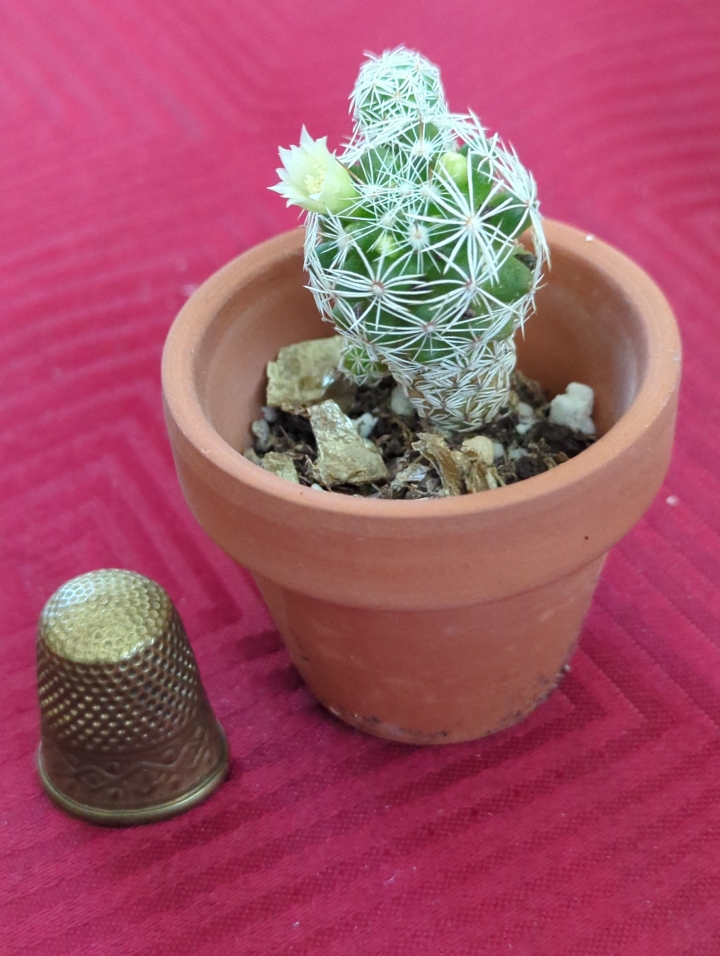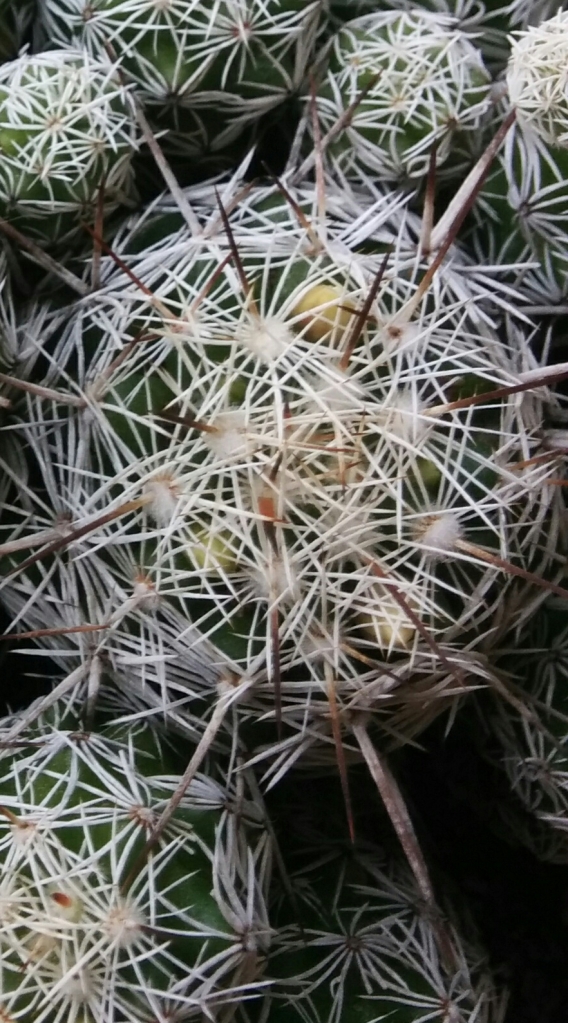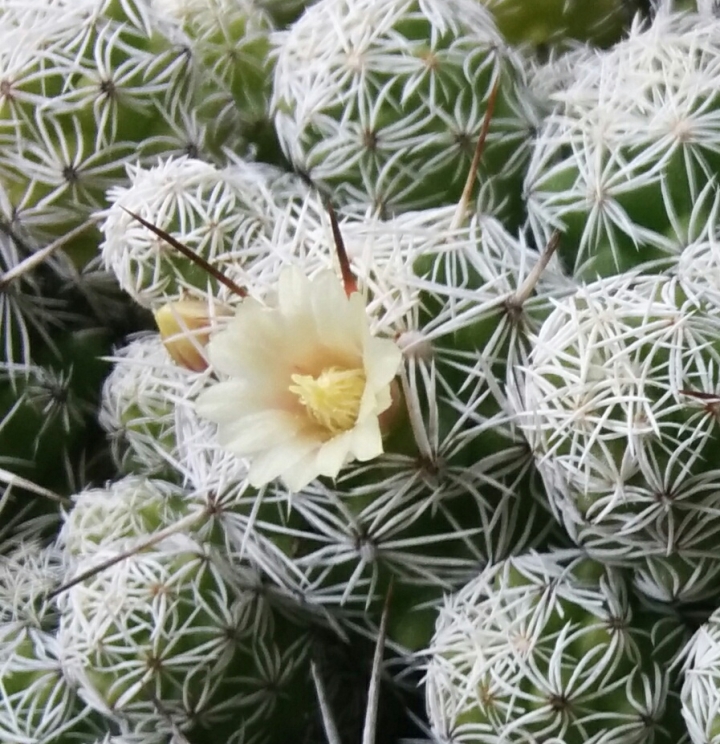Winter has just begun and this is the first planting guide of the season. The following is a list of vegetables that you can plant in June in Sydney, a temperate zone (just click on the link for the growing guide for each vegetable)
- Beans
- Cabbage seedlings
- Garlic
- Kale seedlings
- Lettuce
- Mustard greens
- Onion
- Peas
- Radish
- Snow Peas
- Strawberry plants
Plant of the Month: Mammillaria vetula ssp. gracilis – (Thimble cactus)

The Thimble Cactus or Mammillaria vetula gracilus is a beautiful miniature, slow growing, clump forming cactus native to Mexico where it is endemic in the states of Guanajuato, Hidalgo and Querétaro. It belongs to the genus Mammillaria.
With nearly 200 recognized species, the genus Mammillaria is one of the largest of the cactus family. I will be concentrating on the Mammillaria vetula subspecies gracilis
The Thimble cactus has blue-green spherical to cylindrical stems with blunt conical tubercules. The tubercles are expandable to allow the cactus to store water during times of plentiful rainfall. In times of drought, these organs contract. Internally, the vascular tissue is of two tissue types: xylem vessels and phloem. The xylem vessels transport water from the roots. Phloem facilitates the transfer of sugars throughout the plant.
The plant can grow up to 10cm long and 4 cm in diameter. The stem surface is glabrous, or smooth and the tubercules are tipped with an areole. Areoles are an identifying feature of cacti that separates them from other succulents. Spines, hairs, flowers, new growth, and fruits originate from this pad-like structure.
The spines are actually modified leaves, called foliar thorns, that emerge from the areoles. Each areole can bear 25 to 50 white radial spines. Sometimes, at the centre of some radials of spines, there are 1-2 brown straight , stiff, central ones, 1 cm long, pointing outwards. Usually there is no central spine and the central part is slightly depressed. These radial spines give protection from the sun and predators, direct the water towards the body of the cactus and prevent the evaporation of the water.
The growth forms multiple stems branching from the base to form a cushion of rounded stems that expand horizontally as it matures.

The stem segments can fall off easily but can easily re-root to form new plantlets of for starting a new plant in another pot.


The flowers of the thimble cactus are borne on second-year growth and emerge from the axils between the tubercules and can take the form of a ring of flowers around the upper part of the stem. They are pale yellow, or white funnel shaped and up to 1.5 cm long, and up to 1.3 cm in diameter. They appear in the upper part of the stems from May to July in Sydney.


Cactus flowers are distinguished by the presence of an inferior ovary – that is, the ovary is located beneath the other parts of the cactus flower. The image below shows the corolla of petals and the inner parts of the flower with the many stamens, (filaments and with their anthers). The stamens usually arise from all over the inner surface of the upper part of the floral tube. The flowers have one long style arising from the ovary with a number of stigma on top.

Cultivation:
Site:
Select a bright spot, exposed to 6 hours of direct sunlight moving into shade during the hottest hours of summer days. Indoors place in bright light from a sunny north facing window in the southern hemisphere ( south facing in the northern hemisphere). It thrives best in day temperatures of between 21C to 30C and night temperatures between 15C and 20C.
Pot for Planting:
The best pot for planting the thimble cactus is an unglazed terracotta pot with a drainage hole at the bottom. The hole allows excess water to drain, while the porous terracotta breathes and prevents the soil from staying damp. Never stand in a saucer where water may accumulate.
Soil:
Cactus soil should be well-draining, a quality Cacti and Succulent potting mix of 20-30% with 70% to 80% mineral grit such as coarse sand, pumice, or perlite. The soil should have a pH range of between 5.0 to 7.0.
Water:
Proper watering is the key to cactus success.
Cacti have evolved to store water and can therefore go without it for quite a while. In spring and summer when the plant is actively growing, water sparingly always waiting for the soil to dry up completely before each watering. In Winter, when the plant is dormant, suspend watering completely suspended, to avoid root rotting and just keep an eye on the plant.
Watering should be dependant on soil and environmental moisture rather than by schedule.
This tiny but beautiful plant is a wonderful plant for any sunny situation indoors or out and is such an easy to care for cactus that can even bring you the surprise of a tiny and delicate flower when the conditions are right. Mine has been very happy sharing the space among other succulents in its tiny terracotta pot in a medium sized bonsai container. As the temperature drops over winter I will bring it inside at night and depending on the outside temperature will leave it in a well light position near a sunny north facing window. Hopefully it will be happy and keep growing!


